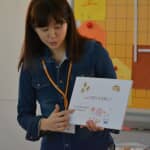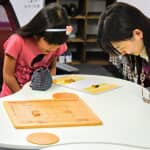Child-raising 1 November 2016
Japanese Wooden Toys Sharpen Children’s Sensibilities
This time, I will tell you about “wooden toys bringing back old memories”, which develop children’s sensitivities and five senses.
Everything has been just fine with my garden. We have harvested many fresh vegetables. We enjoyed rich taste, and my children looked very proud of themselves for their efforts. Our first crop were cucumbers.
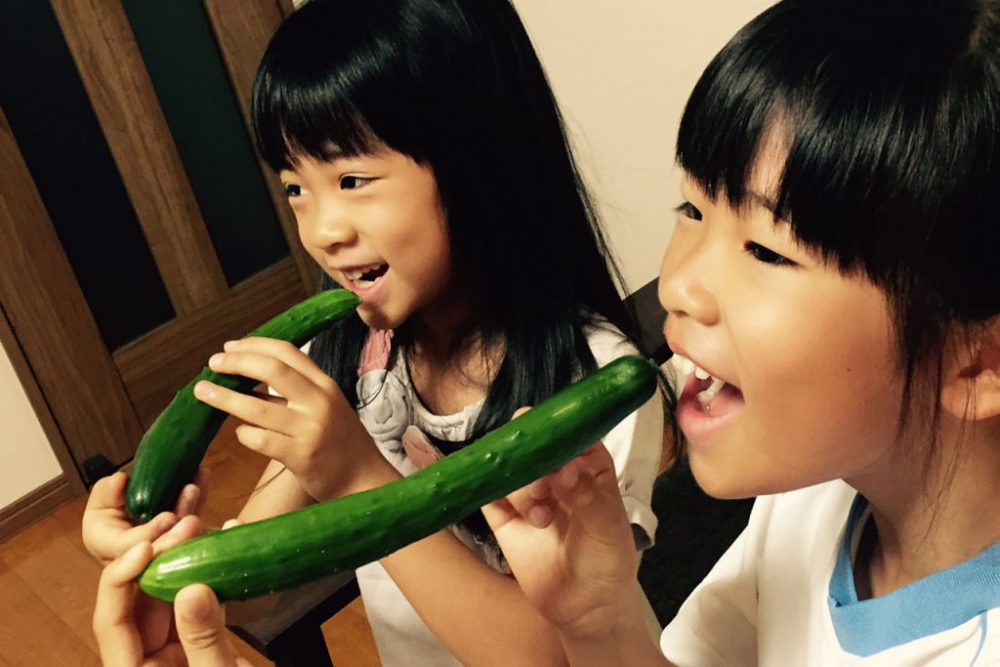
Every morning, my daughters checked and watered cucumbers. They had fun harvesting, and asked me, “Mom, please make today’s morning salad with our cucumbers.” My children found much of interest in vegetables, foods, and cooking, simply because they ate vegetables that they had grown. This is just wonderful!
And today’s topic is nostalgic wooden Toys. I heard a member of “Nihon Kansei Kyouiku Gakkai”, a workshop for sensibility education in Japan, said that you need to cultivate your sensibility and emotion properly in order for you to keep a human lifestyle with strong energy to live. I believe wooden toys that I am bringing up here today are particularly suitable to develop our sensibility and emotion. I think they have plenty of good aspects that we can’t find in digital toys; they are simple, and human friendly. You could feel several feelings through your physical movements to play with them. I hope you would have opportunities to come in contact with traditional wooden toys to refine your sensitivity. Let me introduce five wooden toys: Kendama, Taketombo, Koma, Take Pokkuri, and Shogi.
Kendama: A Toy Enhancing Concentration and Endurance
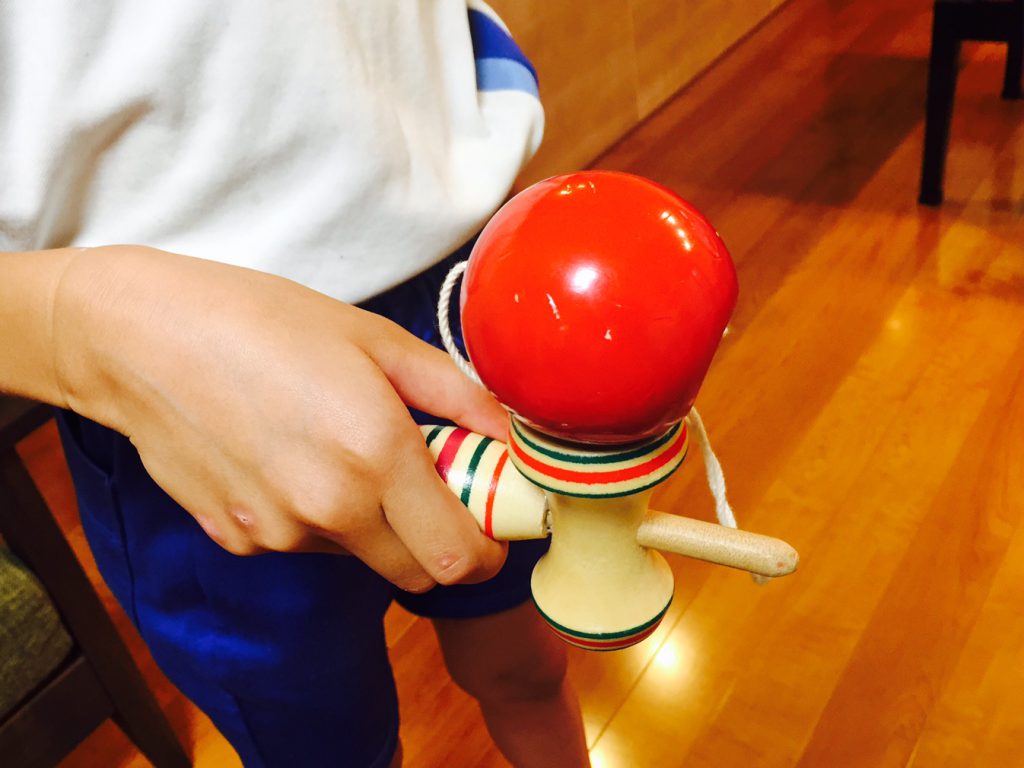
Firstly, I would like to introduce Kendama. Its shape is very simple, which is made up of the “Ken” or handle and a “Tama” or ball that is connected by string to the handle. The handle has three cups and a spike that fits into the hole of the ball. Kendama tricks are done by variations of juggling the ball in the three cups, spinning the ball with the spike of the handle. Recently, Kendama competitions have been held. It is safe to say that going beyond the bounds, Kendama is now a kind of sport continuing over generations. It seems that many people are enjoying Kendama in the world. Kendama has diverse tricks, so that you can try a bunch of different tricks after mastering the one. That is the biggest attraction. The other day, I observed children playing Kendama and noticed that they were enjoying it by trial and error for quite a long time. I thought their concentration and endurance could be cultivated by playing Kendama. Children tried to find new ways to play Kendama in their own unique ways, changing the way to hold a handle or the directions of their bodies. Watching their ingenious efforts, I believed their minds and bodies were developed.
Taketombo: A Bamboo Helicopter Toy–Find out Uniqueness and Difference of Toy Itself–

Taketombo is a bamboo helicopter toy designed to spin in the air with the flick of your hands. This Japanese traditional toy is children’s favorite. Those in above picture are made by my father. The movements of flying helicopters significantly differ from each other by its shape and size. Primarily you need some techniques to fly it, however more importantly you have to know that the quality of each Taketombo will play a great role in the way to fly. After carefully examining Taketombo itself, exchanging toys with friends, or asking grandpa to shape to make it better, children finally added some device to fly more. It is a really charming toy! From craft-making point of view, Taketombo provides scientific interests to figure out its structural features and differences.
Koma: Japanese Spinning Top–Step by Careful Step–
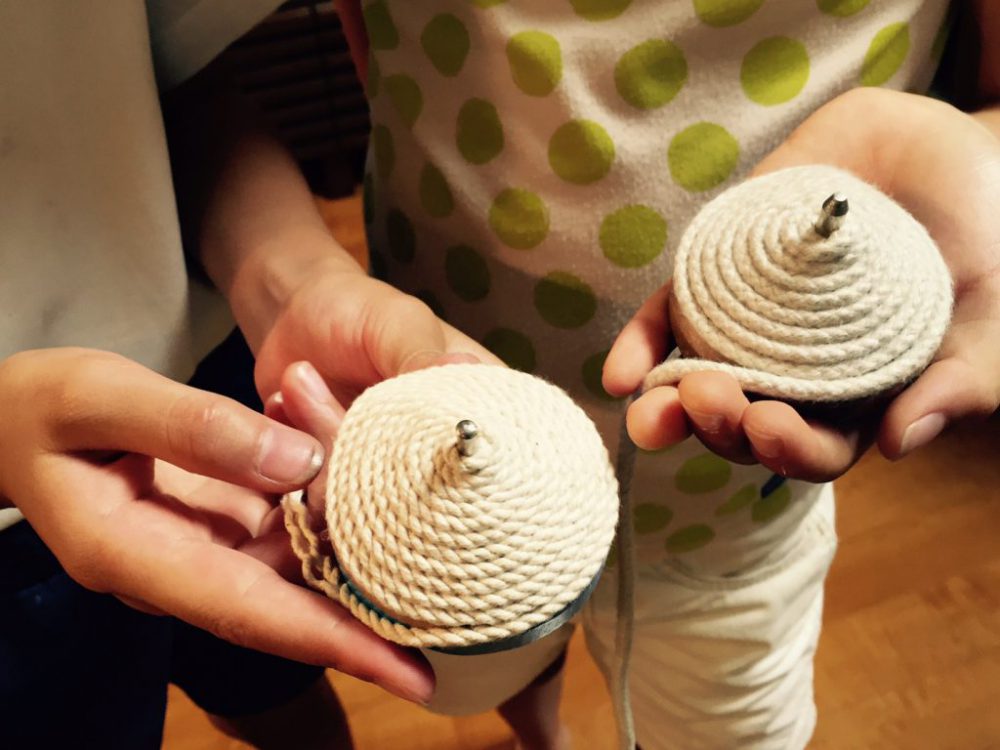
It is actually quite difficult to spin Koma. I tried it for the first time in years, but I couldn’t! My daughters’ friend was made a good teacher to lecture us tips to spin a Koma. According to her, firstly, a string should be twisted around the body of Koma tightly. If you twist a string loosely, it never works. Holding a Koma, adjusting your posture, and you throw it with twisting of your wrist. Our Koma teacher taught us not to throw but to put Koma on a ground and pull a string. You can spin a Koma only with these steps in careful way. Spinning Koama might be a bit difficult for small children. But the satisfaction of completing whole tasks would be felt exceptional. Incidentally, did you know why Japanese spinning tops are called Koma. It was taken after the name of the ancient country, “Koma”, from where Koma was introduced to Japan.
Bamboo Pokkuri: Specific Japanese Geta–Balance Exercise–
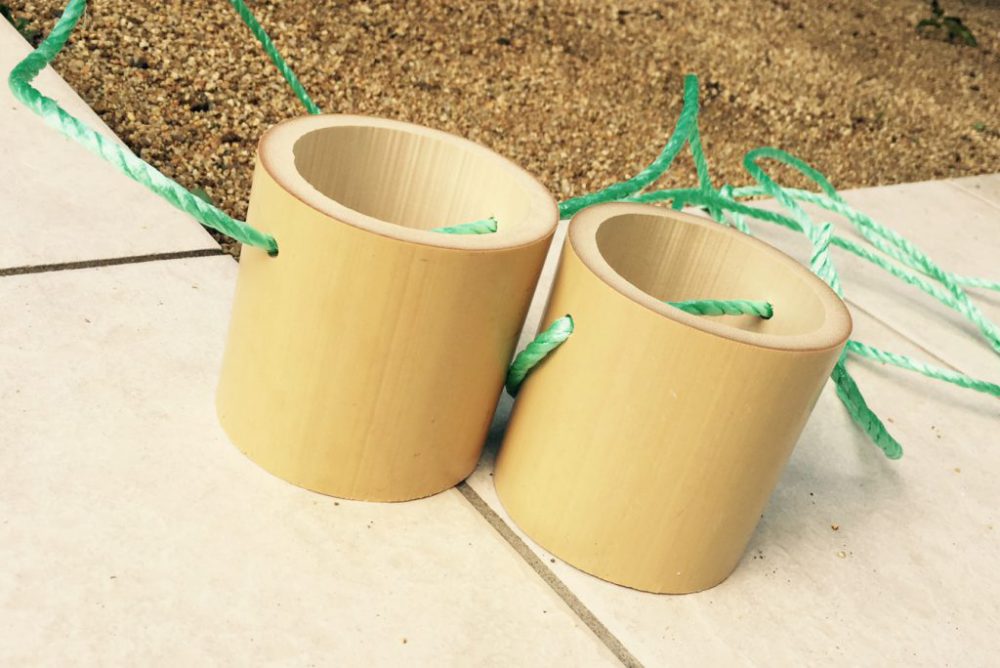
Maiko wear specific geta called Pokkuri or Koppori; they represent the sound of walking in them. Bamboo Pokkori is a wooden toy named after Maiko’s geta.
It’s easy to make by yourselves. First, prepare a set of two bamboo pieces cut in the same height of about 10 cm, make two holes on a body of each bamboo, pass both ends of a few meters long string through the holes, and then tie them. To enjoy this toy, you put your feet on bamboo pieces and hold the strings. Sound similar to Maiko’s pokkori will make you excited. As of late I bought Bamboo Pokkori.
In Japan we have another bamboo toys named Take Uma. Take Uma means “Bamboo horse”, which are a pair of bamboo poles with foot rests. As Take Uma are longer than Take Pokkori, so it’s difficult for small children to enjoy them.
I bought Take Pokkori so as for my second daughter play with her sister. She didn’t have any problem to play with Take Pokkori. It seems that she is exercising her sense of balance. Surely on Take Pokkuri, you can’t walk as usual with different feeling on your soles. Actually, we usually seldom pay attention to the feeling of our soles. To walk on Take Pokkori, you need good balance of your body and coupled movements of your arms and legs. Probably, a tons of brain orders are emitted at the same time.
I suppose I am too matured to enjoy Take Pokkori, since I got muscle pains. Please be careful not to lose your balance, otherwise you would fall down from the toy violently. In my case, muscles I don’t use usually were used.
Shogi: –Enhancing Thinking Power–
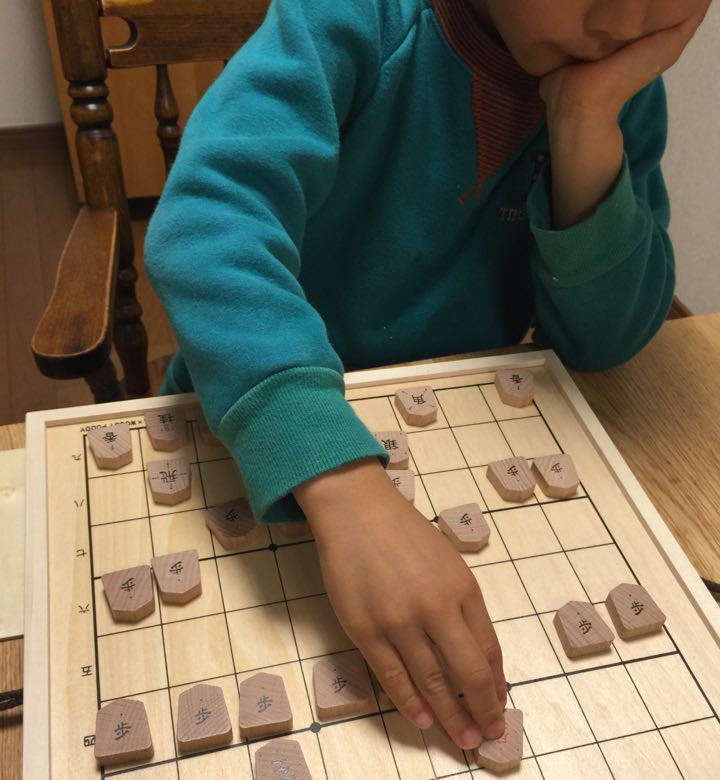
At the end of this post, of course, after all I will bring up Shogi, Shogi is also traditional Japanese wooden toy. This is an ideal toy to enhance your children’s abilities of thinking: standing in someone’s shoes, and thinking and making their own decisions. I do hope you would find out many ways to enjoy yourselves with Shogi.
If you want to know more about Shogi, check out our articles on Shogi rules!

